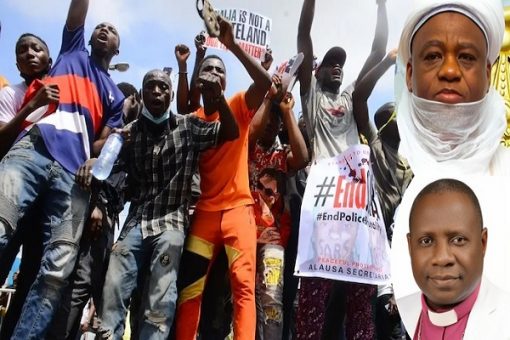Social media has done so much to subvert the popularity and patronage of traditional media, causing the latter to sometimes injuriously imitate the instantaneous reporting style and recklessness of the former. In the ongoing protests in Nigeria, social media was virtually the vehicle by which information, discussions and mobilisation was done. Until societies find ways of regulating it and curbing its feral inclinations, it will retain the potential for causing much harm to individuals and the stability of nations. Not much by way of accurate reporting was, therefore, expected of the social media. Alarmingly, in the same last protests, the embers of which are still smouldering in some states, the usually respectable and moderate traditional media joined the hysteria and disseminated screaming headlines and partisan news items that showed its increasing lack of concern for the stability of the nation. Even the hijack of the protests and the ensuing violence in some states were insufficient to ameliorate the traditional media’s processes and orientation.
With the exception of one or two newspapers and television stations, the traditional media has shown a shocking disregard for professional headline casting, preferring instead biased and sensational reportage of faceless protest organisers. And when some of the organisers showed their faces, the media still ignored the need to contextualise news emanating from those individuals or even probe their backgrounds despite some of them being avowed anarchists. The television stations on their own slanted news reports and discussion programmes in favour of the protests as a component and even manifestation of constitutionally guaranteed free speech, and incredibly painted some of the protest organisers as heroes of democracy. With hyperbole, the newspapers meanwhile suggested through columns and opinion pieces that the October 2020 EndSARS protests would pale in comparison to what would come on August 1-10. It seemed like macabre gloating and baiting. For the media in reference, there was indeed little thought about the portents swaddling the protests, and absolutely no concern that some African states like Sudan, Somalia, Libya, etc were contemporaneously living the nightmare of unresolved and unmanageable protests.
There were undoubtedly grounds for the August 1 protests, which social media aggravated by irresponsible and hateful posts and discussions. But few expected that the traditional media would not exercise caution in reporting the crisis before and during the protests. The reasons may not be farfetched. The 2023 presidential election generated in its wake contentious issues of ethnicity, religion, unmet political ambitions, which left many media establishments trapped in the thicket of political partisanship and loyalty to hardly concealed primordial attachments. For the media houses in reference, exorcising those attachments and ameliorating unmet goals were both difficult and excruciating, especially in light of the hardships the new administration’s policies and measures produced. The protests, in the eyes of the media in question, were thus legitimised by the hunger and hardship not attenuated by the relevance of the administration’s economic panaceas or vitiated by the excessive rot triggered by the previous administrations’ laxity.
Television anchors asked tendentious questions and even proffered superficial analyses and remedies. Too many television stations, despite the regulations guiding their operations, openly and irreverently identified with certain political tendencies and politicians. And newspapers editorialised in their headlines, rolled out iconoclastic opinion pieces and columns, and gave the impression they were not averse to any method of upending the country’s constitutional arrangement. Examples from far and near of how such impatience and extremism led some countries down the road to perdition meant nothing to the media. That if chaos ensued neither the traditional media nor, in some cases, even the social media, would survive, let alone flourish, seemed a distant concern. Nothing and no brakes were sufficient to dissuade the media from hara-kiri. Before and after the August protests were clearly not the best of times for Nigeria’s traditional media, whether television or print. Given the pattern of media ownership, weak regulatory environment, and absence of institutional ramparts, not to talk of their declining share of media market, it is unlikely the situation would improve or objectivity and influence become the watchword.
The traditional media has nearly morphed into the online market. Unable to respond adequately to the corrosive invasion and intrusion of the social media, they will likely become more desperate by lending their influence and integrity to the highest bidder, politician and advertiser alike. Media regulators and ombudsmen are in a predicament over how to handle the problem posed by flagrantly and sometimes disgracefully partisan media. To what extent could they come down hard on offenders without attempting to erode their distinguishing features and even competitive edge? How does a regulator put the brakes on fiery columnists who do not necessarily defame but incite, especially in the absence of a universal definition of incitement, as indeed other countries, including the developed world, have shown?

